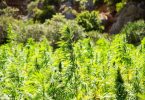https://finance.yahoo.com/news/botanical-educational-alliances-response-u-121500237.html
- Botanical Educational Alliance’s Response to the U.S. Department of Defense’s Safety Alert on Kratom
PR Newswire – In response to the recent Safety Alert from The US department of Defense’s (DoD) issue 18 of the Patient Safety Analysis Center on April 2017, the following addresses some of their statements made regarding Kratom (Mitragyna Speciosa).
The information published in this alert is possibly misleading.
The Federal Food and Drug Administration (FDA) does NOT classify Kratom (Mitragyna speciosa) as a drug, but a dietary supplement. As cited by the FDA: “Kratom is a botanical that qualifies as a dietary ingredient under section 201(ff)(1) of the Federal Food, Drug, and Cosmetic Act (the Act) [21 U.S.C. 321(ff)(1)]”
There has also been no anecdotal data or research to show that kratom is smoked.
With regards to the DoD’s mention of the CDC Field Report from July 29, 2016, they cited that from 2010-2015, 7.4% of kratom exposure calls to the National Poison Data System centers were categorized as major (life-threatening signs or symptoms, with some residual disability)[i].
Let’s put that into perspective:
Of those 7.4% of calls, 660 calls came during a 5-year window. Given that the CDC receives upwards of 2 million calls annually, this is already a miniscule amount[ii].
To be exact, we calculated that the percentage of calls to poison centers from 2010-2014 regarding Kratom was only 0.004% of total calls (rounded from 0.0035%)[iii].
By comparison, exposures involving analgesics accounted for nearly 300,000 calls in 2014 (15% of total calls), while cosmetics and personal care products, cleaning solutions, antidepressants and antihistamines each accounted for more than 100,000[iv] (5% of total calls).
Internationally peer-reviewed studies as well as National Library of Medicine TOXNET toxicology data network have shown that there have been no documented deaths [attributed] to kratom alone[v].
In regards to Kratom and overdoses, there is no scientific evidence that one can overdose from Kratom. Unlike most opiates, research to date suggests that Kratom does not cause respiratory depression.
Dr. Andrew Kruegel, a chemist and neuroscientist at Columbia University says “…most current opioids have life-threatening side effects, specifically “respiratory depression”[vi].
Respiratory depression is known for slowing the breathing of an individual to the point of possible death. It is one of the main factors in overdoses from traditional opiates. The results of Kruegel’s research suggest that kratom can provide pain relief without triggering respiratory depression[vii].
STRIDE/STARLiMS databases, which document certain evidence from cases, have served as reports on Kratom use over a number of years. According to this data, 2013 was the most active year, with 315 reports. The number of reports tapered down to 135 in 2014; 174 in 2015, and 41 thus far in 2016. This was as of September 2016[viii].
Written by Angela Watson, Director of the Botanical Education Alliance (BEA)
About the BEA:
The Botanical Education Alliance (BEA) is an organization dedicated to educating consumers, lawmakers, law enforcement, and the media about safe and therapeutic natural supplements including Mitragyna speciosa, also known as Kratom.
For further information please visit us at www.botanical-education.org
Sources:
[i] Center for Disease Control and Prevention (2016). Notes from the Field: Kratom (Mitragyna Speciosa) Exposures: Reported to Poison Centers – United States, 2010-2015. Retrieved from: https://www.cdc.gov/mmwr/volumes/65/wr/mm6529a4.htm
[ii] Mowry, J. B., Spyker, D. A., Brooks, D. E., McMillan, N., & Schauben, J. L. (2015). 2014 Annual Report of the American Association of Poison Control Centers’ National Poison Data System (NPDS): 32nd Annual Report. Clinical toxicology (Philadelphia, Pa.), 10, 962–961147.
[iii] https://www.botanical-education.org/cdc-wrong-kratom/
[iv] US Department of Helath and Human Services/CDC, MMWR, Vol. 65(29), pgs. 748-749. 2016
[v] National Library of Medicine (NLM), “Mitragynin e CASRN: 4098-40-2,” 2012, TOXNET (Toxicology Data
Network).
[vi] Just Say Maybe: Should Kratom be Banned or Not? http://www.wnyc.org/story/just-say-maybe-kratom-illegal-ban-or-not/
[vii] Just Say Maybe: Should Kratom be Banned or Not? http://www.wnyc.org/story/just-say-maybe-kratom-illegal-ban-or-not/
[viii] For an example of a more scientifically rigorous analysis of poison control center data in contract with the DEA’s Three factor “analysis.” See, E.g. Mowry, J.B. et al., 2014 Annual report to the American Association of Poison control Center’s National Poison Data System (NPDS) 32d Annual Report, Clinical Toxicology (2015) 53 (10):962-1146 We note that neither Kratom nor its constituents are mentioned at all in this lengthy and detailed report. Surely, if Kratom were an imminent hazard to the public safety d and health as alleged, it would have been included.
Media Contact: Angela Watson, Botanical Education Alliance, 929-445-2321, press@botanical-education.org
News distributed by PR Newswire iReach: https://ireach.prnewswire.com



